
Now, I have to confess this from the outset, and some of you who know me will already have heard this, but I am one of those annoyingly rational beings who don't really "get" crime novels. I'm the one who shouts perfectly sensible things like "Don't go in there!" or "Why do you think he's bloody followed you to Brighton?!", only to be cast into a furrow of frustration when the idiot goes and does precisely what he/she shouldn't have done, usually with grisly results. Add to that general lack of common sense a feisty dose of poor prose, wooden characters and repetition, not to mention interminably detailed autopsy descriptions, and you have a freshly baked genre that doesn't do anything positive for me at all.
But of course, things move on and writing and plotting does, actually, get better, even in the crime genre. At the forefront of this new wave of top drawer quality is, of course, the Scandinavian crime novel, and it's hard to find anyone who hasn't yet come under its spell. What arguably started with Henning Mankell reached something of a frenzy last year with Stieg Larsson. Yet it could be said that the most interesting Scandinavian crime writing currently comes from the pens of a handful of women, and here I want to sing the praises of the "other" Larsson.
 Lapland, right at the top of the map of Sweden, 150 kilometres north of the polar circle. The very thought
of where it lies changes my perspective completely and has me, who always felt quite smugly northern
European, way up here near the Danish border, feeling positively Mediterranean in comparison. It is a
region of extremes. The winters are long, hard and very cold. The people are, well, different. It is hard
to warm to them and you feel at times that they don't much like each other, either. All of this forms
the wonderfully described backdrop to Åsa Larsson's books.
Lapland, right at the top of the map of Sweden, 150 kilometres north of the polar circle. The very thought
of where it lies changes my perspective completely and has me, who always felt quite smugly northern
European, way up here near the Danish border, feeling positively Mediterranean in comparison. It is a
region of extremes. The winters are long, hard and very cold. The people are, well, different. It is hard
to warm to them and you feel at times that they don't much like each other, either. All of this forms
the wonderfully described backdrop to Åsa Larsson's books.
These are mystical novels, psychological and atmospheric and very well written. Her books are all about guilt and atonement, about the shadows of the past, about prejudice without much mercy. And about the world in which the books are set: the area around Kiruna.
Åsa Larsson is hardly the first you would suspect of being a crime writer. A young tax lawyer who lives in supremely cosmopolitan Stockholm, it is hard to imagine how profound her knowledge can be of this unreal region in the north of her country. But it is where she grew up, and where she, like many other inhabitants of this remote place, fell under the spell of Christian fundamentalist pastors who kept whole parishes under their thumb. A godforsaken place? That depends on your point of view.
The past hasn't let Åsa Larsson go, and in each of her first two novels, a religious leader falls victim to the cold seeping wrath of murder.
The first book, known as Sunstorm in the US and The Savage Altar in the UK, sets the ghostly scene from the very beginning. The dim polar light shows the body of Viktor Stråndgard, who lies dead in the new church. The charismatic star of an influential local sect has been brutally stabbed, and all attempts to find the killer come up against the stubborn silence of the parish. Has sibling love turned into hate? Or is the murderer someone outside the church? Larsson is undaunted and clever, sometimes even quite witty, in bringing her confident and measured tale to a conclusion, though it is a conclusion that is not neat, but rather leaves the reader with a thrilling sense of unease. It's all very Old Testament, and I loved it!
The second book, The Blood Spilt, opens on mid-summer night in Jukkasjärvi, a small village near Kiruna, where the pastor, Mildred Nilsson (this time Swedish-Lutheran), is found hanging from her church's organ. Again, the murderer is sought, but what is found along the way is a safe filled with threatening letters addressed to the dead pastor, and general hatred for her activities with women in distress. And then her successor, Pastor Stefan Wickström, suddenly disappears....
In the third book, The Black Path, no member of the clergy comes to grief, but instead a young couple. Simon and Wilma, 18 and 17 years old, go diving in an iced-over lake in search of an aircraft that was supposed to have crashed there. But when they attempt to return to the surface, the hole in the ice through which they descended has been blocked over by a door... and someone is standing on it. ("What did you think would happen?!", a small, cynical voice in my ear peeps. I ignore it and read on, quite breathless). Let's just say that matters escalate from there.
But much as I enjoy describing the opening scenes of these books and making them sound thrilling enough to read, I haven't even mentioned what actually makes Åsa Larsson's series so special: it is the formidable cooperation of the two fearless women who lead the investigations and who could not be more different from each other.
Rebecka Martinsson, the heroine of the series, is ‒ em ‒ a young tax lawyer based in Stockholm, who rushes back to her home town in the first book, in order to support her friend, the sister of the murdered Viktor. Somewhat moody and withdrawn, it's clear from the start that she's not entirely stable and is obviously carrying quite a bit of baggage with her, which makes her, of course, all the more interesting. By the third book she has moved permanently to Kiruna and can continue being a clever solver of mysteries.
While Rebecka is tall and pretty with dark hair, the police commissioner Anna-Maria Mella is short, blond, pragmatic, open, friendly, and heavily pregnant with her fourth child in the first book. Although she is instantly likeable, you get the distinct feeling that the women find it hard to empathise with each other. But they are bound by a deeper cause that make such feelings obsolete, and we can happily wallow in this fine psychological relationship, with its sparkling dialogues.
What is best of all, however, is how the characters develop over the course of the books, Rebecka more so than Anna-Maria, who has reached a certain age and is very well rooted, balanced and level‒headed anyway. Rebecka, on the other hand, experiences terrible things that throw her off‒kilter, and this is ultimately what appeals most to your rational, sensible reviewer: She needs time and space to get over her psychological crisis and recover her equilibrium, just like anyone else would. In a world of gruesome crime fiction, peopled with superhero characters who shrug off the most awful sights and carry on with life as if nothing has happened, Rebecka is a breath of fresh, arctic air, no matter how disturbing. She is my kind of hero.
Thankfully, Åsa Larsson has planned six novels in the Rebecka Martinsson series, five of which have
already been published in Sweden (and three of those, so far, in English). I've already got my hands on the
fourth, in German translation, and I just can't wait to read it. I hope you'll discover the criminal
landscape of Swedish Lapland for yourself very soon!
Photo credit: Thomas Utsi, "Midnight sun in Swedish Lapland," courtesy of www.visitsweden.com
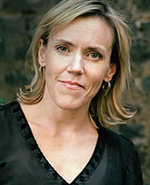
Åsa Larsson
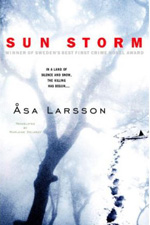
Delta, paperback, 9780385340786 (Book 1, US)
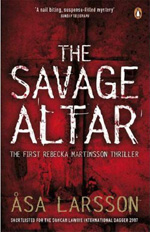
Penguin, paperback, 9780141024714 (Book 1, UK)
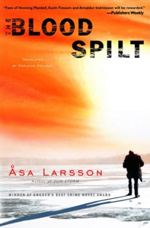
Delta, paperback 9780385340793
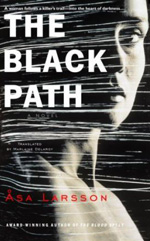
Delta, paperback, 9780385341011